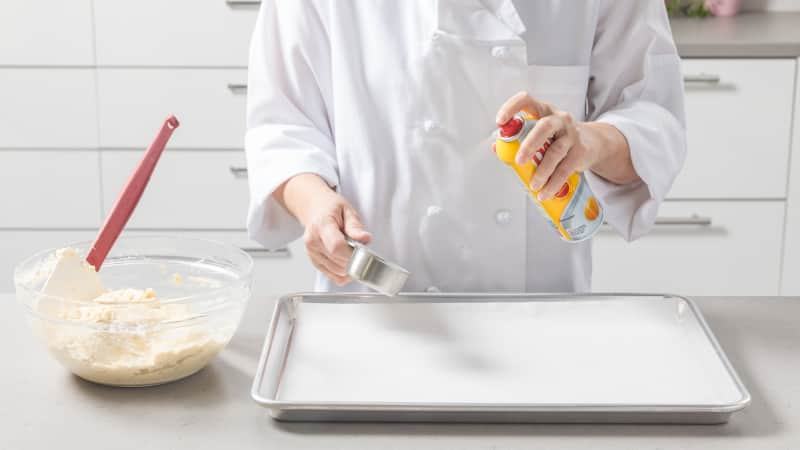That was when I had a revelation. Cream isn't a single ingredient, it's two: water (with a little protein and sugar mixed in) and solid fat. The fat particles in cream are so minute that we don't perceive them as solid, and they were stowing away in the cream only to melt in the heat of the oven, making the biscuits greasy and, in combination with the water in the cream, causing them to spread.
A new thunderbolt struck: What if I melted the fat by warming the cream before I mixed it into the dough? That sound you just heard was the collective gasp of generations of horrified Southern bakers, but hear me out: Maybe heating the cream would increase its fluidity enough to enable me to make a scoopable dough with less of it. If so, that could potentially fix both the spreading and the greasiness.
My first attempt failed pretty spectacularly. I heated 2 cups of cream to 160 degrees, and as I stirred it into the dry ingredients, its heat and moisture activated the baking powder, causing the dough to expand so boisterously that it defied my frantic attempts to shovel it into the ⅓-cup measuring cup. By the time the dough mounds went into the oven, the baking powder was spent, so the biscuits didn't rise. But they didn't spread either, and they weren't objectionably fatty.
A bit of research revealed that the fat in cream liquefies at between 90 and 95 degrees and the acids in baking powder are activated at about 140 degrees. Maybe all I had to do was make sure the cream was above 95 but below 140.
I cautiously heated the cream only to body temperature and then stirred it into the dry ingredients. The dough came together easily, neither too dry nor too wet, and with no riotous inflation. I scooped and I baked. And I prevailed. Mostly.
These biscuits held their shape beautifully; were fluffy, not flat; and were pleasantly rich without being greasy. Their flavor, however, was a bit bland. Having already flouted the most sacred law of biscuit making by introducing a warm ingredient, I took a firm stand on the side of sugar and added a little to the dry ingredients. I also added a bit of baking soda, not for lift but for its slightly mineral-y tang.
You can serve biscuits with almost anything, and with a recipe this quick and easy, why wouldn't you?









